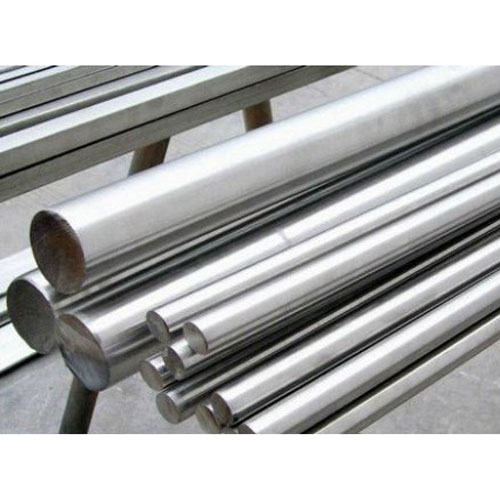
Hastelloy C22 | Nickel Alloy C22 - Nickel Alloy Supplier Malaysia
https://www.esteelsuppliers.com/new/shop/nickel-alloy/142/
Kali terakhir kemas kini
Harga:
R.F.Q
We are the Hastelloy C22 / Nickel Alloy C22 Supplier Malaysia. HASTELLOY C22 is one of the well-known and well-proven nickel-chromium-molybdenum materials, it is very ductile, exhibits excellent weldability, and is easily fabricated into industrial components.
Share Product:
Butiran
E Steel Sdn Bhd - A Leading Supplier of Nickel Alloy Hastelloy C22
Hastelloy C22 (or known as Alloy C22)
The following specifications cover Super Alloy HASTELLOY C22 Alloy
- ASTM B366
- ASTM B564
- ASTM B574
- ASTM B575
- ASTM B619
- ASTM B622
- DIN 2.4602
- UNS N06022
----------
Property Results :
Related Metals:
- Inconel 622 ™
- Nicrofer 5621 hMoW ™
- HASTELLOY C22 alloy ™
- Nicrofer 5621 ™
----------
Chemistry Data :
| Carbon | 0.015 max |
|---|---|
| Chromium | 20 – 22.5 |
| Cobalt | 2.5 min |
| Iron | 2 – 6 |
| Manganese | 0.5 max |
| Molybdenum | 12.5 – 14.5 |
| Nickel | Balance |
| Phosphorus | 0.02 max |
| Silicon | 0.08 max |
| Sulphur | 0.02 max |
| Tungsten | 2.5 – 3.5 |
| Vanadium | 0.35 min |
| Principal Design Features | A wrought nickel-chromium-molybdenum alloy also containing tungsten for improved overall corrosion resistance than most other similar alloys. Developed to provide an alternative to Alloys 625 and C-276. This alloy offers excellent metallurgical stability, resistance to localized corrosion, and is not sensitized during welding or heating. |
|---|---|
| Applications | The alloy is used to manufacture a wide variety of chemical process equipment such as: Flue gas scrubbers, chlorination systems, acid production and pickling systems, outlet ducting and stack liners for power plants, sulfur dioxide scrubbers, pulp and paper bleach plants and for weld overlay of less corrosion resistant metals. |
| Machinability | Machining is best accomplished using high speed steel tooling for drilling operations. Carbide tools work well for turning or milling. Drilling (high speed steel) speeds 10-15 surface feet /minute with feeds of 0.001″ (for 1/8 ” dia. hole) to 0.007″ (for 1″ dia. hole) per revolution. Turning (carbide tools) at 90 to 110 surface feet per minute and feed of 0.010″ (for roughing) to 0.006″ (for finishing). Machining may be done dry or with conventional coolants. |
| Forming | Can be readily cold or hot formed. After hot forming, or severe cold forming, the parts should be solution heat treated. |
| Welding | Readily welded by conventional methods, except that submerged arc welding should be avoided due to the high heat input and slow cooling of that method. Clean the weld areas thoroughly before welding and use matching filler metal ER NiCrMo-10 and E NiCrMo-10 for GTAW and SMAC methods respectively. This alloy may be used in the as welded form for most applications as it resists grain boundary precipitates during welding. |
| Heat Treatment | Solution anneal at 2050 F followed by a rapid quench. |
| Forging | Hot forging can be done in the temperature range of 2100 F. A solution heat treatment should be performed after forging |
| Hot Working | Hot working may be done followed by a solution anneal heat treatment. |
| Cold Working | The alloy has very good ductility and, although stiffer than the austenitic stainless steels, cold working is the preferred means of forming. Severe cold working may cause work hardening and in this event a solution heat treatment may be used to restore the original mechanical properties of the alloy. |
| Annealing | See “Heat Treatment” for solution annealing. |
| Aging | The alloy may be aged at temperatures of 950 F to 1900 F for some increase in hardness and tensile strength (about 3% gain). However aging (or long exposure) at temperatures above 1400 F results in degradation of V-notch impact strength. |
| Hardening | Not hardenable by heat treatment. The alloy does harden due to sever cold working. |
| Other Physical Props | V-notch impact strength is 260 ft. lbs. at 70 F and at minus 320 F. |
Physical Data :
| Density (lb / cu. in.) | 0.314 |
| Specific Gravity | 8.69 |
| Specific Heat (Btu/lb/Deg F – [32-212 Deg F]) | 0.1 |
| Melting Point (Deg F) | 2550 |
| Thermal Conductivity | 70 |
| Mean Coeff Thermal Expansion | 6.9 |
| Modulus of Elasticity Tension | 29.9 |
Spesifikasi